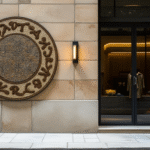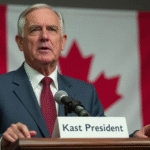Background on the Bank of Japan (BOJ) and Its Inflation Target
The Bank of Japan (BOJ) is the central banking institution responsible for managing Japan’s monetary policy. Its primary objective is to maintain price stability, targeting an inflation rate of approximately 2%. This target aims to foster sustainable economic growth and prevent deflation, which can hinder economic activity.
BOJ Official’s Warning on Inflation Risks
Naoki Tamura, a member of the BOJ’s Policy Board, recently expressed concerns about rising inflation risks. Tamura highlighted that the BOJ might need to raise interest rates “decisively” to counteract these inflationary pressures, even if uncertainty persists regarding U.S. tariffs.
Inflation Acceleration and Wage Costs
Tamura noted that inflation is accelerating faster than projected in the BOJ’s previous policy meeting on May 1. He also pointed out that businesses might start passing on increased labor costs by raising service prices more substantially.
Impact of U.S. Tariffs on Japan’s Economy
Although U.S. tariffs will weigh on Japan’s economy and prices, Tamura believes that consumer inflation is likely to remain around 2% until the fiscal year 2027. He delivered this assessment during a speech to business leaders in Fukushima.
BOJ’s Inflation Expectations and Policy Adjustments
In its May forecasts, the BOJ anticipates that underlying inflation will stabilize for some time before accelerating to levels consistent with its price stability objective by the second half of its three-year forecast horizon ending in fiscal year 2027.
Tamura emphasized that these forecasts are preliminary and subject to significant revisions depending on the evolution of U.S. tariff policies.
Contrasting Views Within the BOJ
Tamura’s comments are more assertive than those of BOJ Governor Kazuo Ueda, who has stressed the need to pause rate hikes due to the “extremely high” uncertainty surrounding U.S. trade policy.
Impact of U.S. Tariffs on Japan’s Economic Recovery
Tamura stated that while U.S. tariffs may slow Japan’s economic recovery, they are unlikely to derail it, as the manufacturing sector — which accounts for roughly 20% of Japan’s Gross Domestic Product (GDP) — bears the brunt of these trade-related impacts.
Key Questions and Answers
- What is the BOJ’s primary objective? The BOJ aims to maintain price stability, targeting an inflation rate of approximately 2%.
- Why is the BOJ considering rate hikes? The BOJ may need to raise interest rates “decisively” due to rising inflation risks, even if uncertainty persists regarding U.S. tariffs.
- How will U.S. tariffs affect Japan’s economy? Although U.S. tariffs will weigh on Japan’s economy and prices, they are unlikely to derail the country’s economic recovery, primarily affecting the manufacturing sector.
- What are Tamura’s views on inflation expectations? Tamura believes that Japan’s consumer inflation is likely to remain around 2% until the fiscal year 2027, with underlying inflation stabilizing before accelerating to consistent levels with the BOJ’s price stability objective.
- How do Tamura’s views contrast with those of BOJ Governor Kazuo Ueda? Tamura’s comments are more assertive than Ueda’s, who has emphasized the need to pause rate hikes due to high uncertainty surrounding U.S. trade policy.





